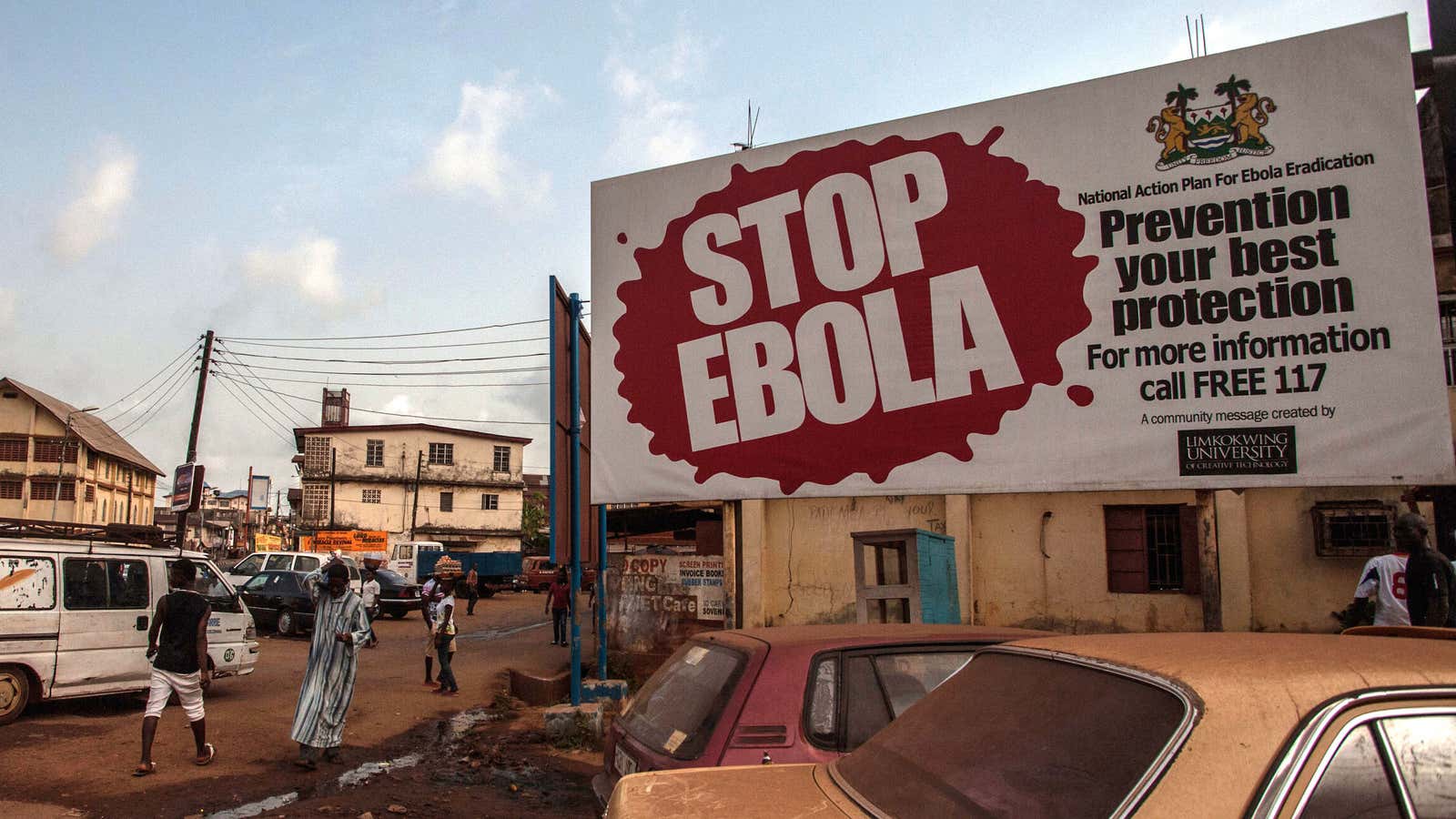In its battle to stop the spread of the Ebola after a recent outbreak, a new WHO-backed vaccine is the Democratic Republic of Congo’s weapon of choice.
On May 12, the World Health Organization declared an Ebola outbreak in DR Congo after it confirmed three deaths. At the time, the United Nations health agency said there was no cause for panic. Now, with as many as 52 suspected cases, DR Congo’s health ministry is stepping up its response and has approved the use of a new experimental vaccine to stop the outbreak.
In published findings from tests of the vaccine, rVSV-ZEBOV, it showed a 100% protection rate. During trials conducted in Guinea, thousands of people tested were all confirmed as virus-free within 10 days. While WHO said at the time that the vaccine will not be available for mass use until 2018, pharmaceutical giants Merck, backed by GAVI, a global vaccine alliance, made 300,000 doses of the vaccine available in the event of an outbreak.
That foresight could yet pay off in DR Congo where officials claim that up to 400 people that may have had contact with some of the individuals suspected of carrying the virus are now being tracked down. In a previous outbreak mainly in the West African countries of Liberia, Sierra Leone and Guinea, the Ebola virus killed over 11,000 people as health services were ill-prepared to respond to the outbreak.
For its part, WHO also admitted to a slow response to the outbreak. In contrast, the Congolese government reacted quickly (link in French) to its outbreak, sending a team of doctors and scientists to the affected area to treat the suspected cases and investigate the extent of infection.
DR Congo’s relative containment of the virus so far has been attributed to the outbreak’s occurrence in a remote part of the country’s northeast. But that may yet prove a pitfall as the remoteness of the area could hamper a vaccination campaign as officials will have to deal with issues such as difficult logistics and storage for the vaccine which needs to be kept in containers set at a temperature of -80 degrees Celsius.
